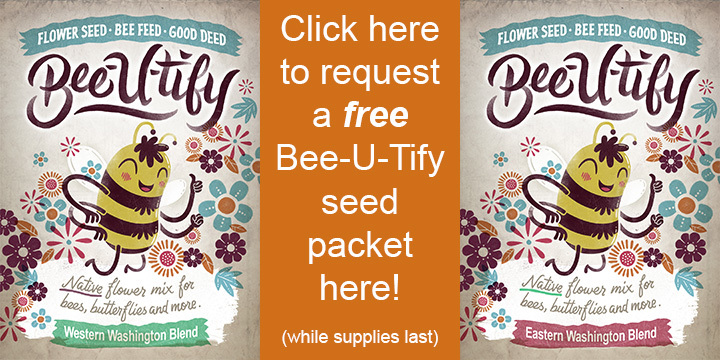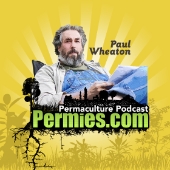
 4
4




When you reach your lowest point, you are open to the greatest change.
-Avatar Aang
 2
2








Argue for your limitations and they are yours forever.




When you reach your lowest point, you are open to the greatest change.
-Avatar Aang
 1
1








Argue for your limitations and they are yours forever.
 2
2




 2
2




 1
1




'Theoretically this level of creeping Orwellian dynamics should ramp up our awareness, but what happens instead is that each alert becomes less and less effective because we're incredibly stupid.' - Jerry Holkins
 4
4




![Filename: 20180716_201448.jpg
Description: Early summer garden. The bluish-green plants on the left are Cerinthe. Beyond that are Bupleurum blooming (yellow flowers). Sweet peas growing along the fence. [Thumbnail for 20180716_201448.jpg]](/t/93503/a/74409/thumb-20180716_201448.jpg)
![Filename: 20180729_094837.jpg
Description: Rudbeckias, cosmos, and sweet peas. Also a chicken, but she's hiding in the jungle. [Thumbnail for 20180729_094837.jpg]](/t/93503/a/74410/thumb-20180729_094837.jpg)
I keep a blog over here: bramblewoodhill.com
 3
3






 1
1




When you reach your lowest point, you are open to the greatest change.
-Avatar Aang
 3
3






 2
2




Many things last lifetimes or eons, but the only thing that's permanent is the ever-changing flow itself
 1
1




 2
2




George Bastion wrote:Maples are a good late winter forage around here
 2
2




—
Sim
 1
1




Murphy was an optimist.




Penny Oakenleaf wrote:The #1 food source for bees in a lot of the PNW are our ubiquitous blackberries. They're their main nectar crop of the whole season. And then I come round to harvest the berries for juicing and jamming. That huge natural monocrop also makes the bees vulnerable. Mine died in spite of feeding sugar throughout the summer last fall and winter, because first the forest fire smoke made them think their neighborhood is on fire, then the early cold and wet fall cooped them up and made it unsafe for the bees to open their hives to add sugar sooner than I did.
Black locust trees only bloom for a little time (10-14 days on average), but my bees go hogwild when they're blooming, and there are several big old ones up and down my road. They're nitrogen fixing, can be coppiced for fence posts or other construction projects, and fast growers to the point of sometimes being a nuisance, if you don't yank the new seedlings out of the ground when they're small. I've also got a couple of really old Beauty Bushes (Linnea amabilis), that are huge, and when they're in full pink bloom, you feel like you're at NASCAR when standing under them, because of all the bee species buzzing. I usually count several kinds of bumblebees, my own Carniolan honeybees, some feral local honeybees, and some other beekeeper's golden Italian bees. Beauty bushes are also one of my chickens' favorite trees, because they can shelter under their canopies for shade and predator protection. I've got the intent to scatter wildflower seeds into my pastures to increase plant diversity, too, because as long as something is blooming, the bees will find it.
For pollen, some things, such as Witch Hazel seem to be available year round. If you can find a local beekeeping course and have a chance to take it, please do. I felt very confident to start keeping bees after taking the class, and because it was a voluntary open book exam, I got myself certified as an Apprentice Master Beekeeper in the State of Washington. The PNW is one of the few areas where bees are active year round (they'll start foraging on sunny days if the temperature is in the mid to high 50's), so most beekeeping books aren't exactly applicable locally, and good classes will cover some common sources of forage in the area.
When you reach your lowest point, you are open to the greatest change.
-Avatar Aang




R. Steele wrote:James Landreth,
What part of Western Washington are you in? Depending on your exact location, elevation and soil type, including pH, will determine the best choices. As those will dictate exactly what species of trees and plants in combination, that will be needed to provide year round bee forage. Also terrain and lighting can be useful information, as even part shade or shaded areas can sometimes get enough light to produce some types of bee forage. If you wanna keep it permaculture, those factors are essential to low or no maintenance production of your bee forage crops. This will also allow for the best selection of multi use crops, that allow for additional usage and or potential revenue streams. Lindens are known to provide the most bee forage per acer amongst tree species considering your general area, but thats only one part of the season. In addition, the benefit of Lindens are the under hung bloom structures that alow bee foraging to happen during and after rain events, which can be important in areas that rain during the Linden bloom cycle. Which if I recall accurately, Western Washington will still be getting frequent precipitation during the Linden bloom in spring.
When you reach your lowest point, you are open to the greatest change.
-Avatar Aang
 1
1




Murphy was an optimist.




When you reach your lowest point, you are open to the greatest change.
-Avatar Aang
 2
2








Cultivate abundance for people, plants and wildlife - Growing with Nature



 1
1




Mediterranean climate, hugel trenches, fabulous clay soil high in nutrients, self-watering containers with hugel layers, keyhole composting with low hugel raised beds, thick Back to Eden Wood chips mulch (distinguished from Bark chips), using as many native plants as possible....all drought tolerant.
 2
2





 2
2




 1
1




 1
1





|
I have discovered my inner Beavis through interpretive dance. I learned it from this tiny ad:
The new gardening playing cards kickstarter is now live!
https://www.kickstarter.com/projects/paulwheaton/garden-cards
|






